We were up early. I had had trouble sleeping because I was anticipting seeing the gorillas. I’ve been looking forward to this for close to 4 years. We left the hotel at 6:30 and arrived at Volcano’s National Park at 7. On the way there we saw lots of people out running for exercise, sometimes in big groups. We were commenting that a society has to be quite secure to focus on getting enough exercise. At the park, there were lots of people having coffee and waiting for the trekking to be organized. Hussein went off to get us registered and make sure that we got a nearby family. There are 22 gorilla families in total, 12 get daily visitors and 10 are studied/researched by representatives of the Dian Fosse Foundation. We were organized into 8 person groups, each with two guides, that go to the gorilla families that receive visitors. I believe the permits sell out every day. There were also people going to see the golden moneys there.
10% of the income from the gorilla tours goes back to the local communities, thus incentivizing the locals to protect the gorillas. The worldwide population of mountain gorillas is around 1,000, spread throughout a mountain range that encompasses parts of Rwanda, the Congo, and Uganda. They have been so successful in protecting and growing the population in Rwanda that they are running out of land for the gorillas and have a 5-year plan to buy farmland to expand their territory. A handful of gorillas have died because they fight each other for the limited space.
Here are some pictures of the gathering area.

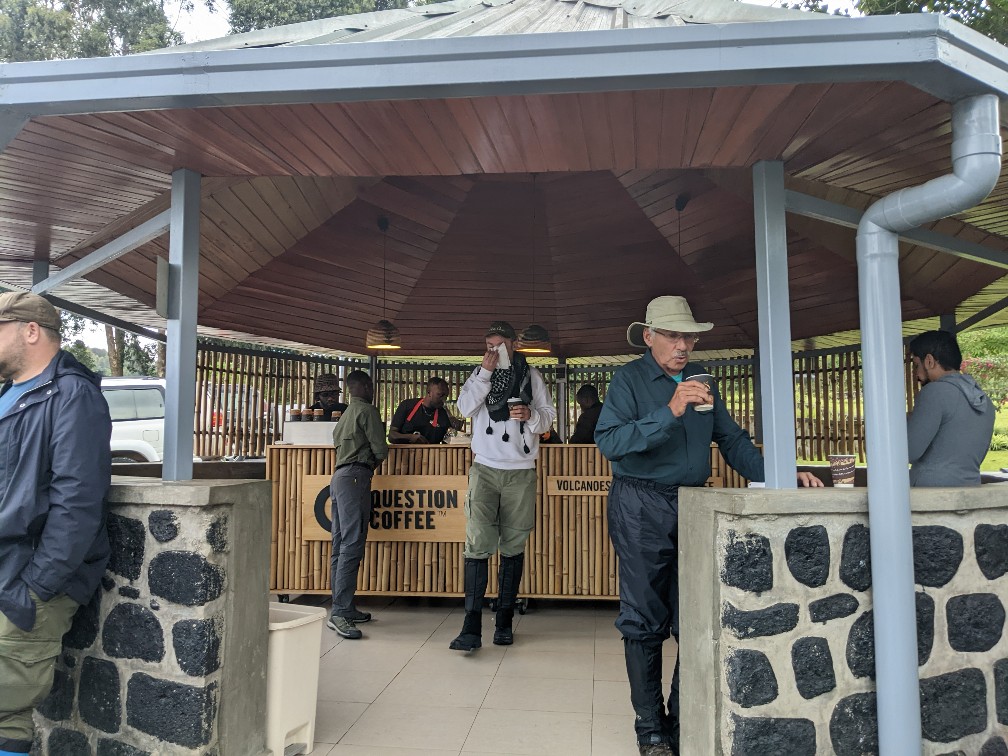
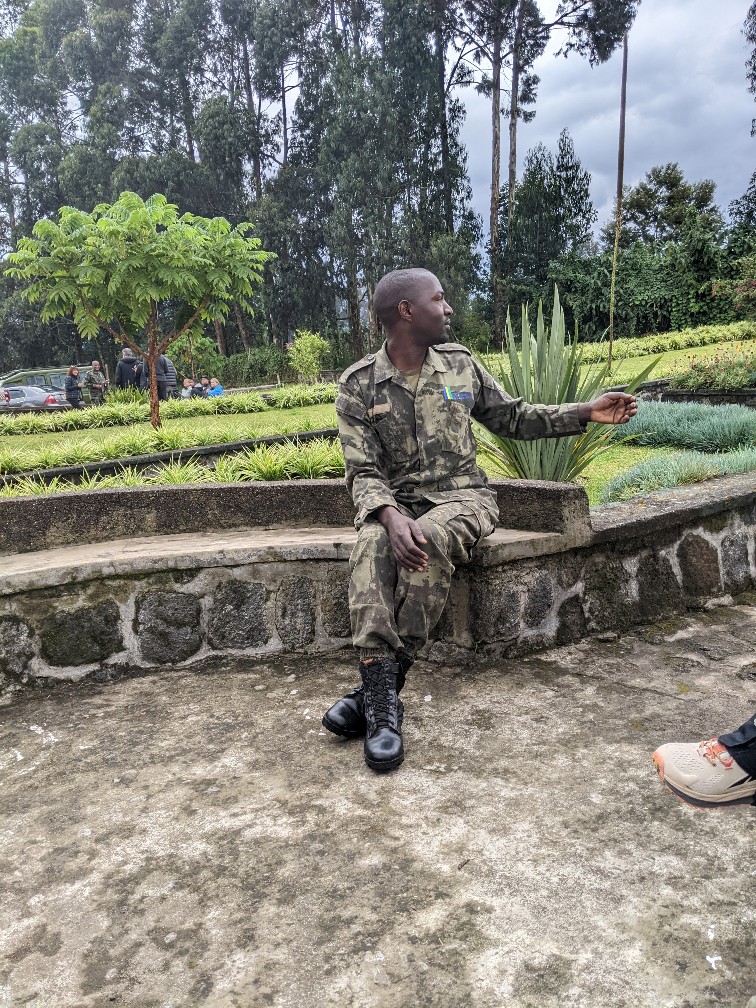
We had two guides Emmanuel and Francis. Emmanuel has been working with the gorilla for 12 years. He told us a little about the family we were going to see. It has two silverbacks. The back of a male gorilla turns grey when he is about 12 years old (male gorillas live for 35 to 45 years old). The two silverbacks in this family are brothers, Guhonda, the alpha and Big Ben, his brother. Big Ben is bald. This is unheard of and they aren’t sure why he is bald. He can’t attract any females because they don’t like his baldness, so he can’t start his own family. The family had several babies.
We got back in the car and travelled to the trailhead. There we were met by a number of porters. We were encouraged to hire a porter by Burt, who had arranged our travel plans. The porters are former poachers, so finding alternative income is important. We each hired a porter. My porter’s name was Innocent. I would say he was helpful at times and unhelpful at other times. The path was very narrow and he wanted to hold my hand. I couldn’t walk squarely. Also, when the going got tough, he held my hand and my armpit which wasn’t the most comfortable. But he was trying to help and he didn’t speak any English so we managed. We walk up the mountain through farmland for about 30 minutes. The walk was pretty easy and we had no trouble. Then we got to the edge of rainforest which had no path, stinging nettles and very dense vegetation. It was not easy going. We were walking over bushes that had been a slightly trampled.

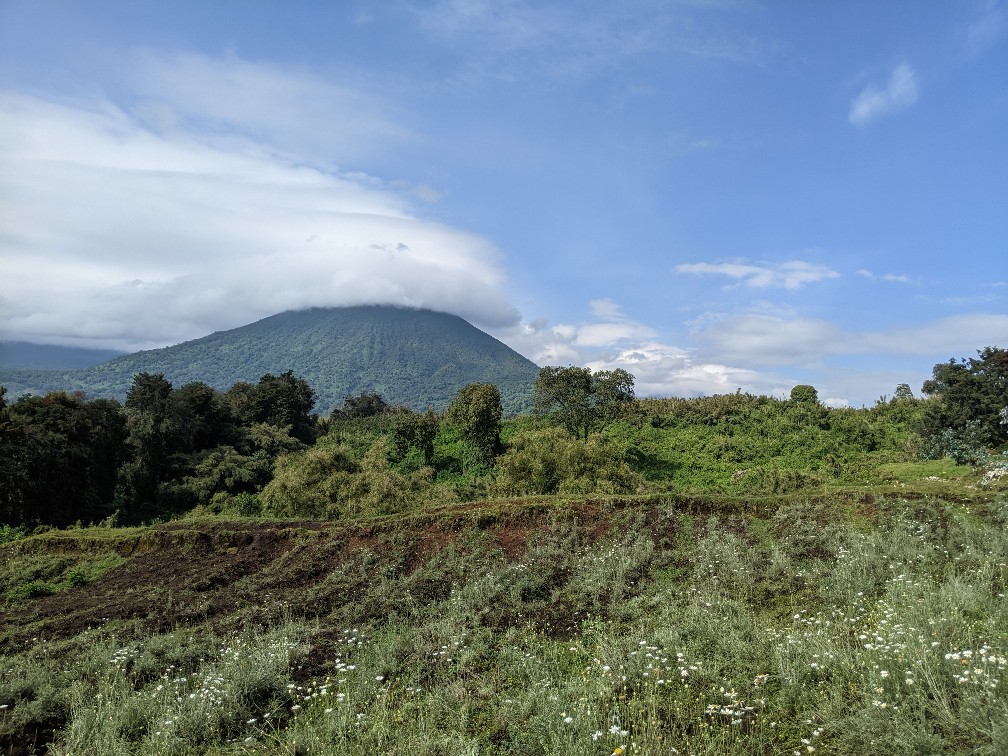
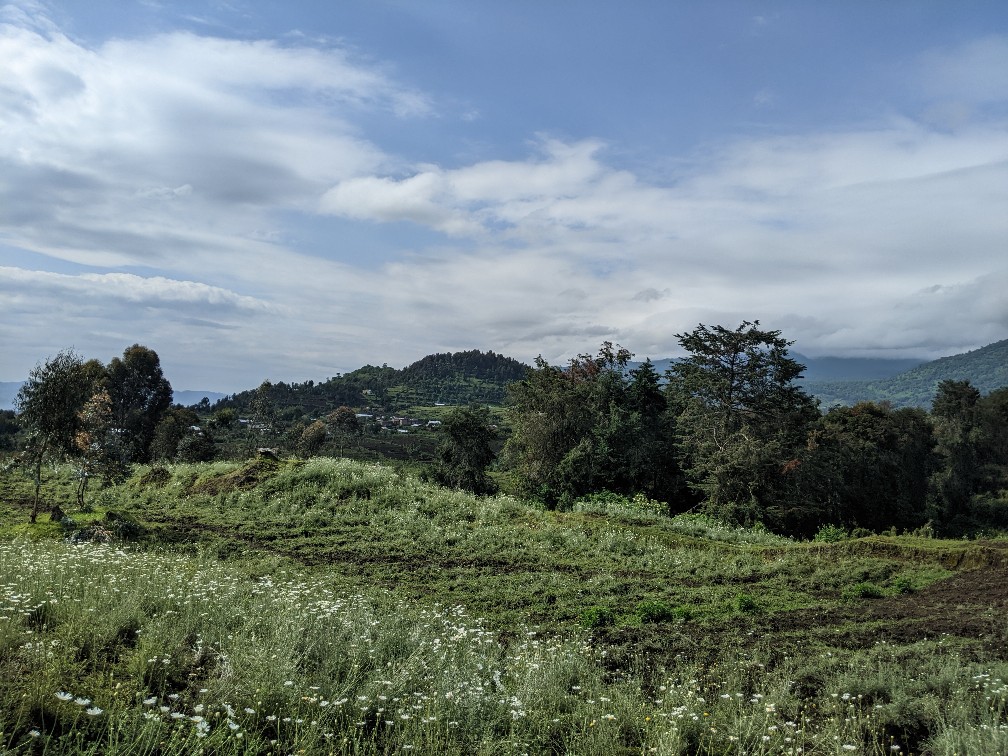
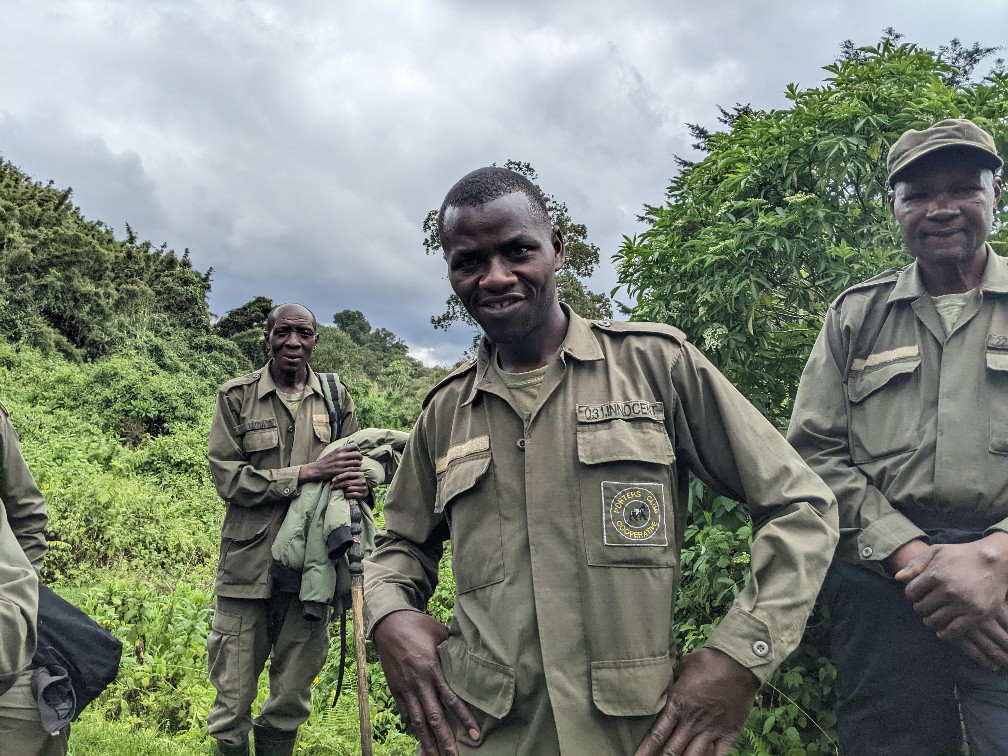
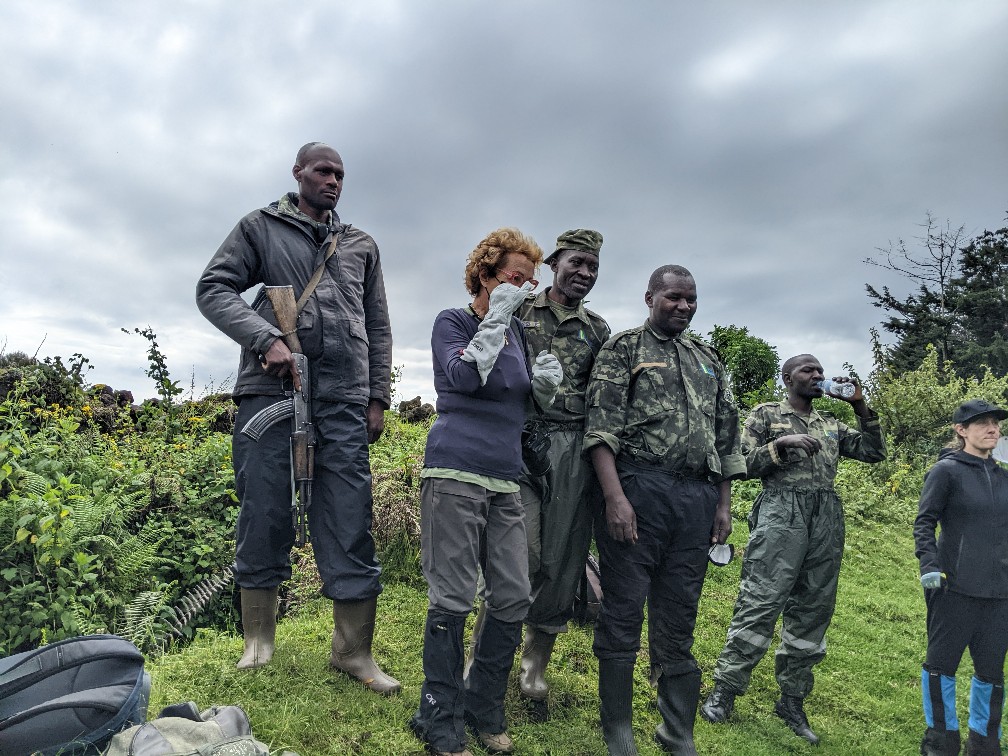
Once we got close to the gorillas we had to leave our porters behind. There would be too many people if they came too.
Gorillas typically wake up at sunrise and then spend 3 hours grazing around for breakfast. Then they take a nap and repeat the process for lunch and dinner. They go to sleep for the night around sunset. They make a new nest, always in a different location from the prior night, to sleep in. There was a team of 4 trackers who track the gorillas all day so they know roughly where the gorillas decide to sleep. Then the trackers are up early the next morning to find the gorillas. This is how the guides know where to take their groups.
We were walking up a hill, over the bushes and through the stinging nettles and suddenly there was a juvenile male gorilla, just sitting there scratching himself. As we watched him, other gorillas wandered closer to us. Eventually Big Ben came down the hill. He beat his chest and charged us. We had been instructed to crouch down when they do that. Big Ben or one of the other juvenile males did this several more times while we were watching them. A couple of times a young male moved through our group and hip checked someone, knocking them over. No one got hurt. We also saw some young ones playing.
We were only supposed to be with them for one hour but it seemed longer. We were watching them, moving around to see them better and taking pictures. It was hard to get a good picture because they often had their backs to us. During our briefing we were told to say about 20 ft away from them, but our guides let us get as close as 3 ft. It was truly amazing. Here are some pictures.
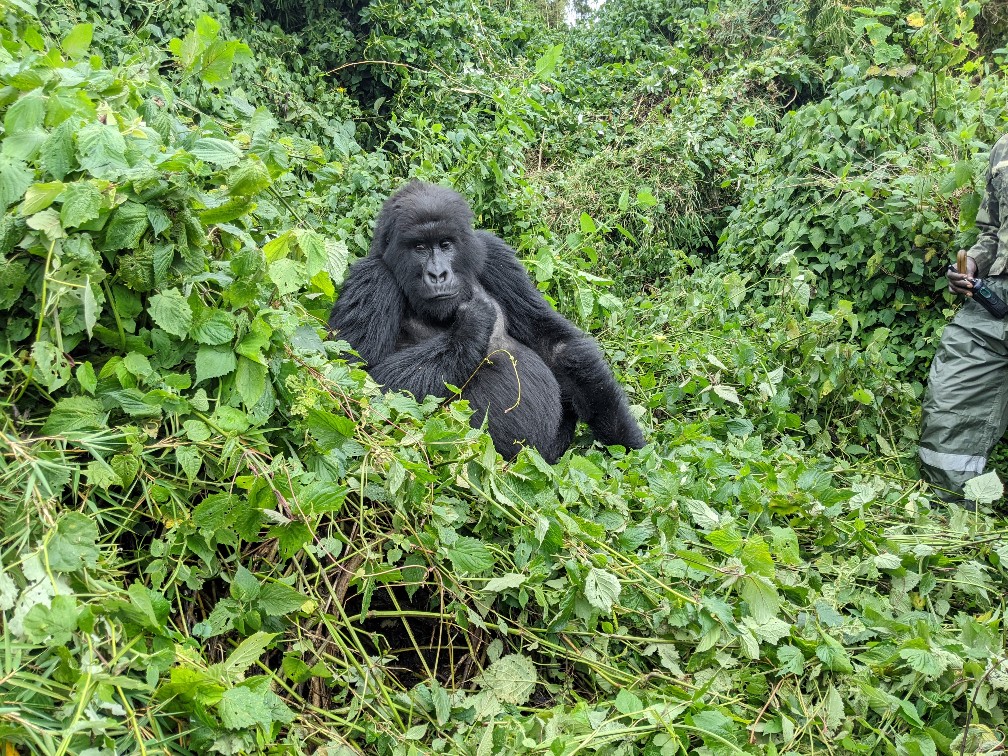
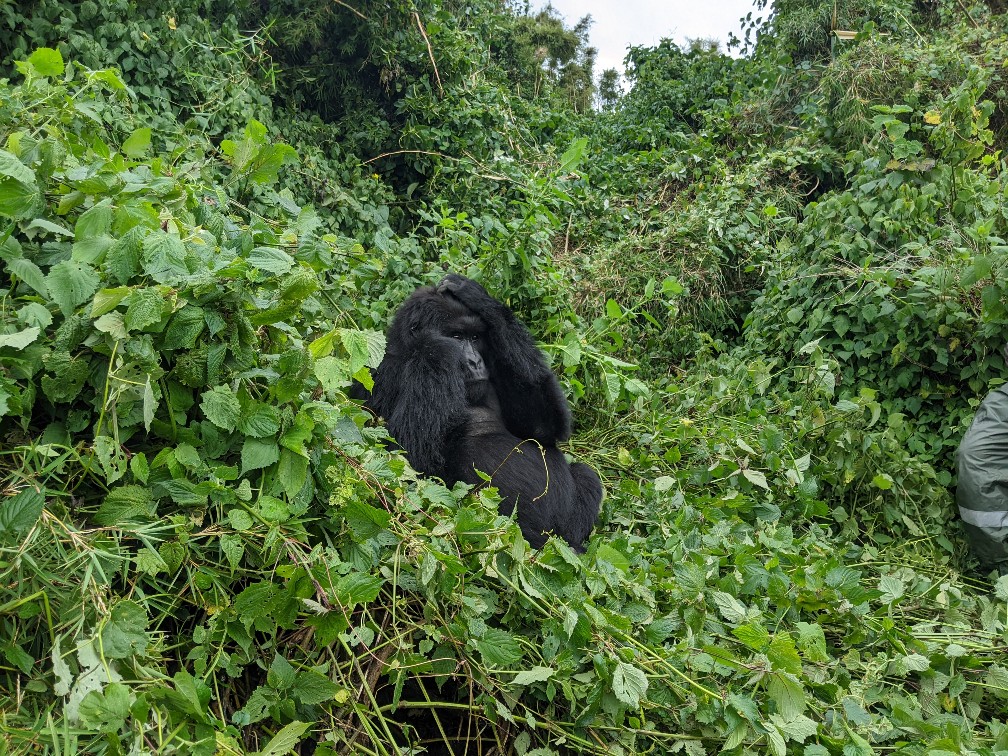
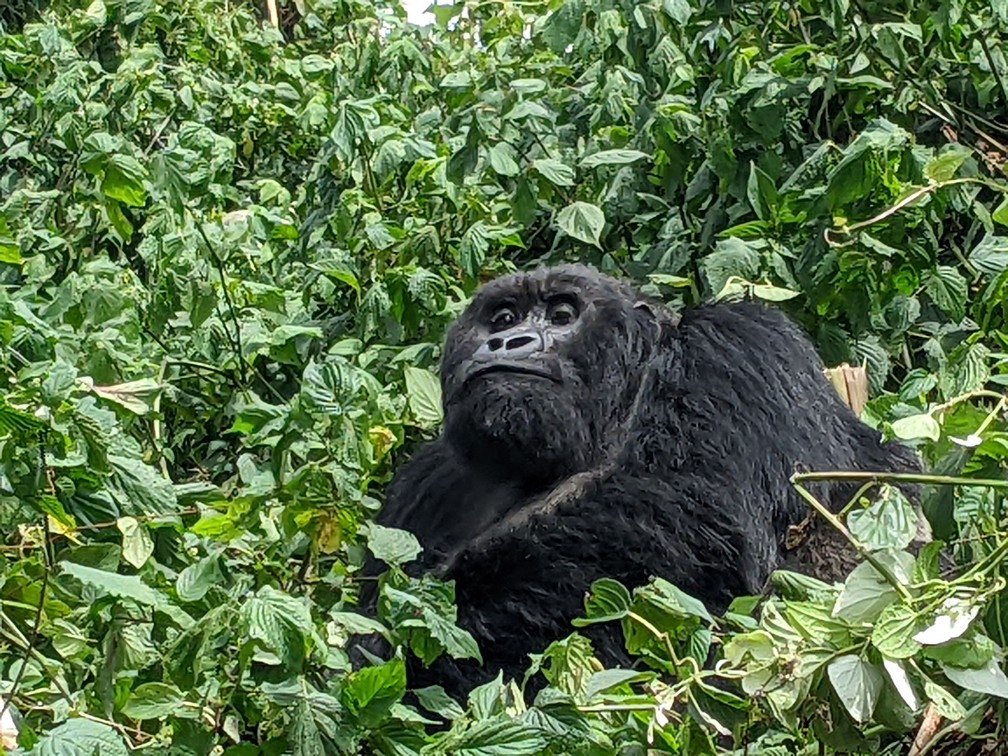


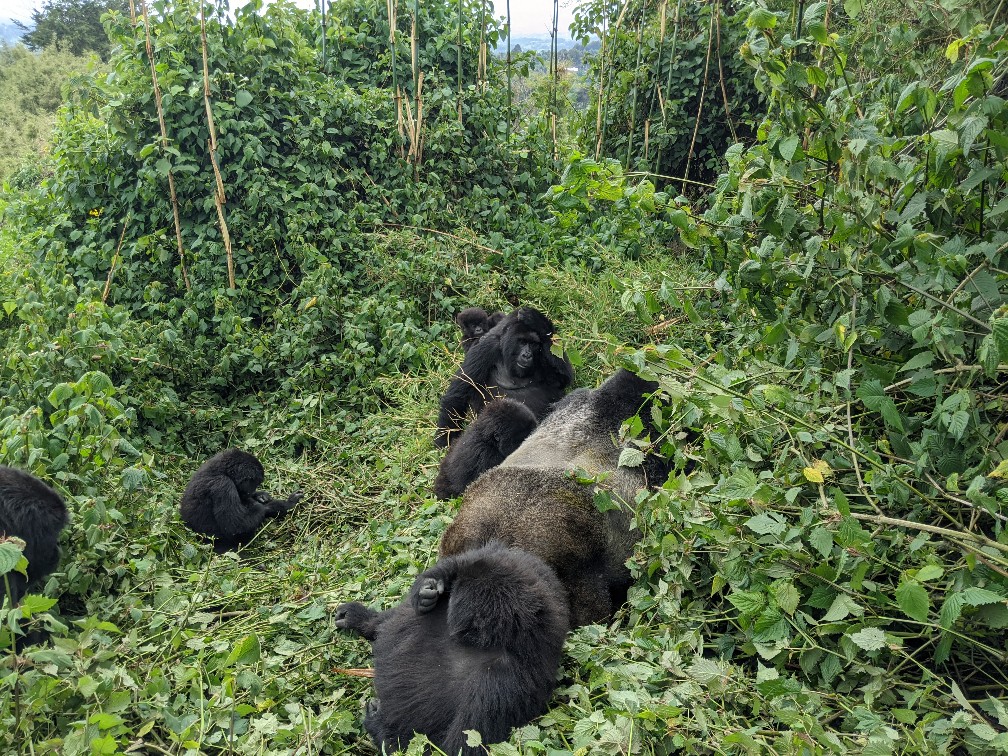
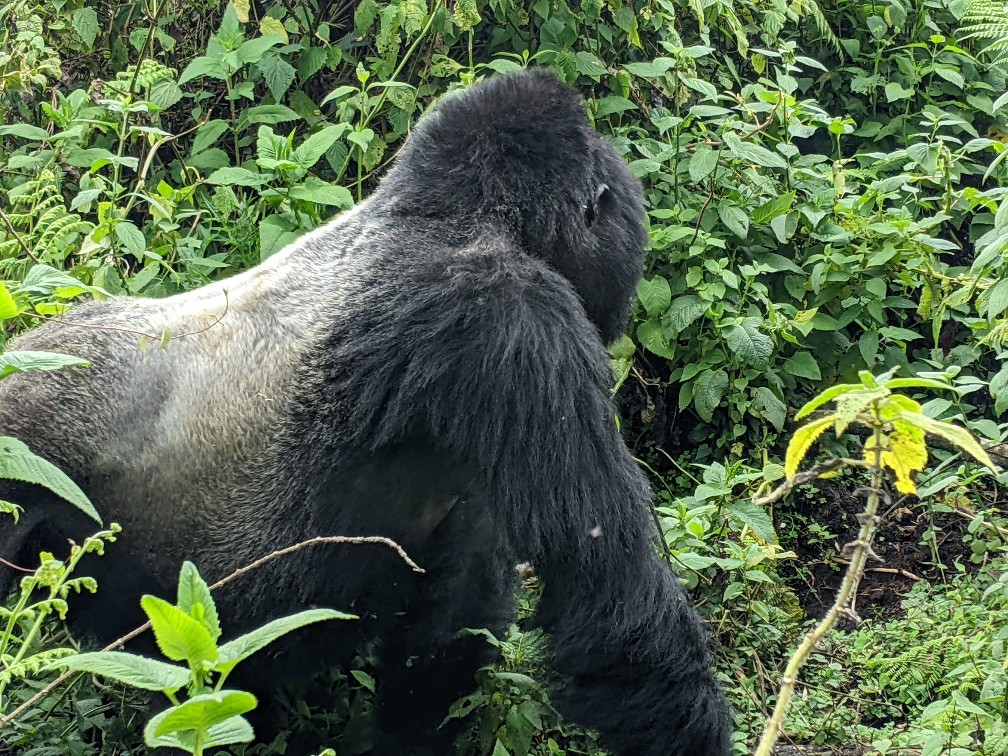
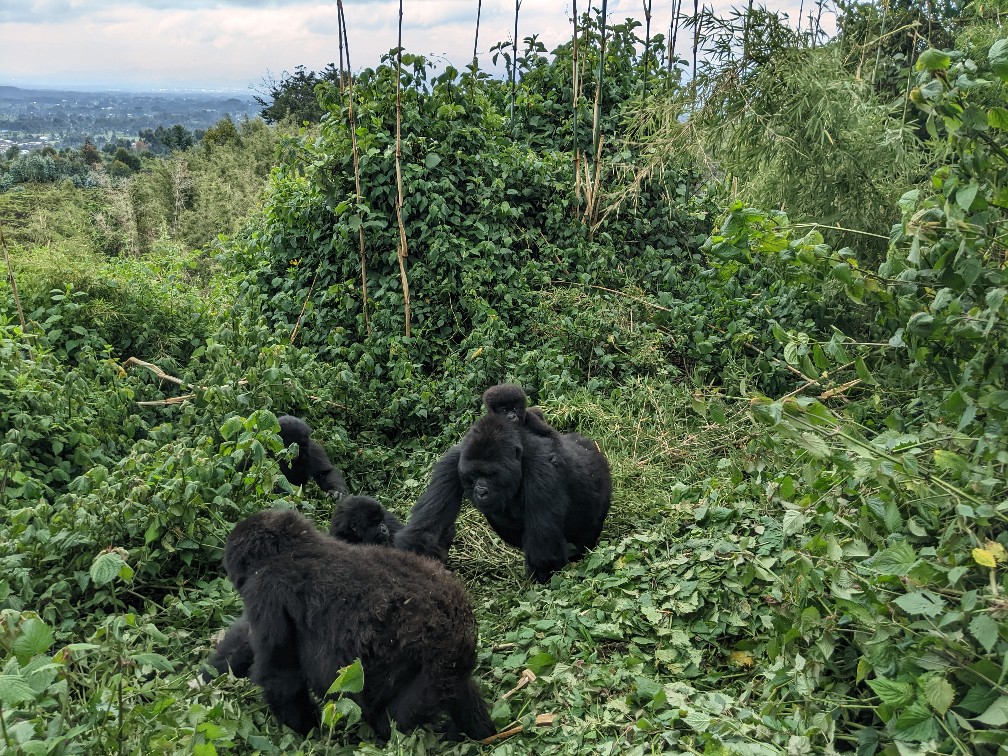
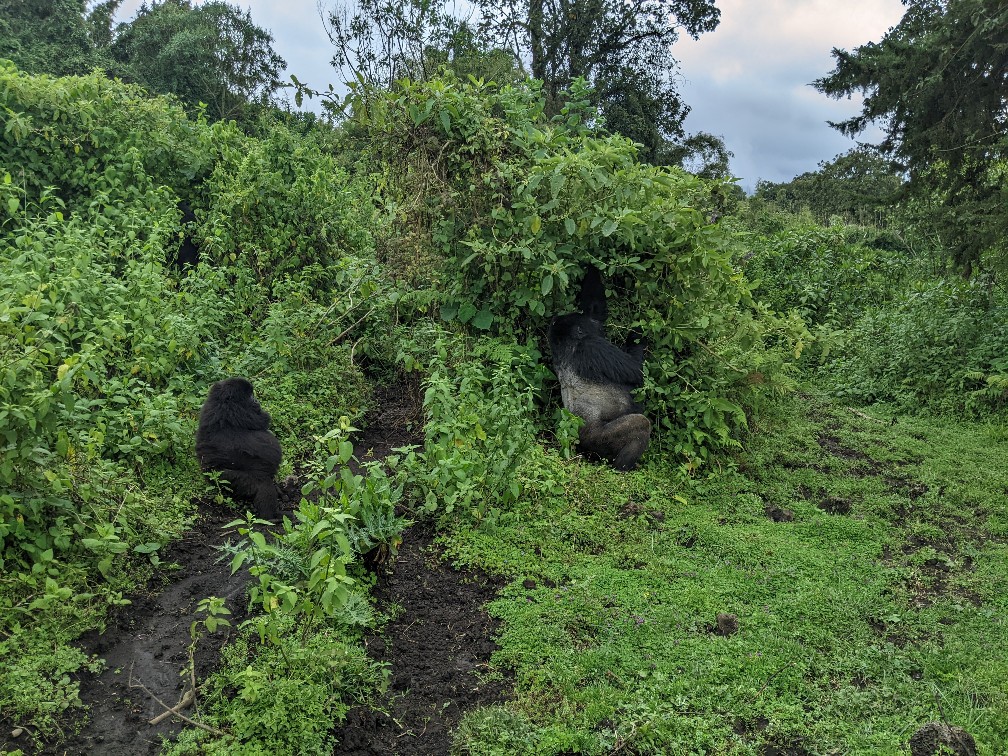
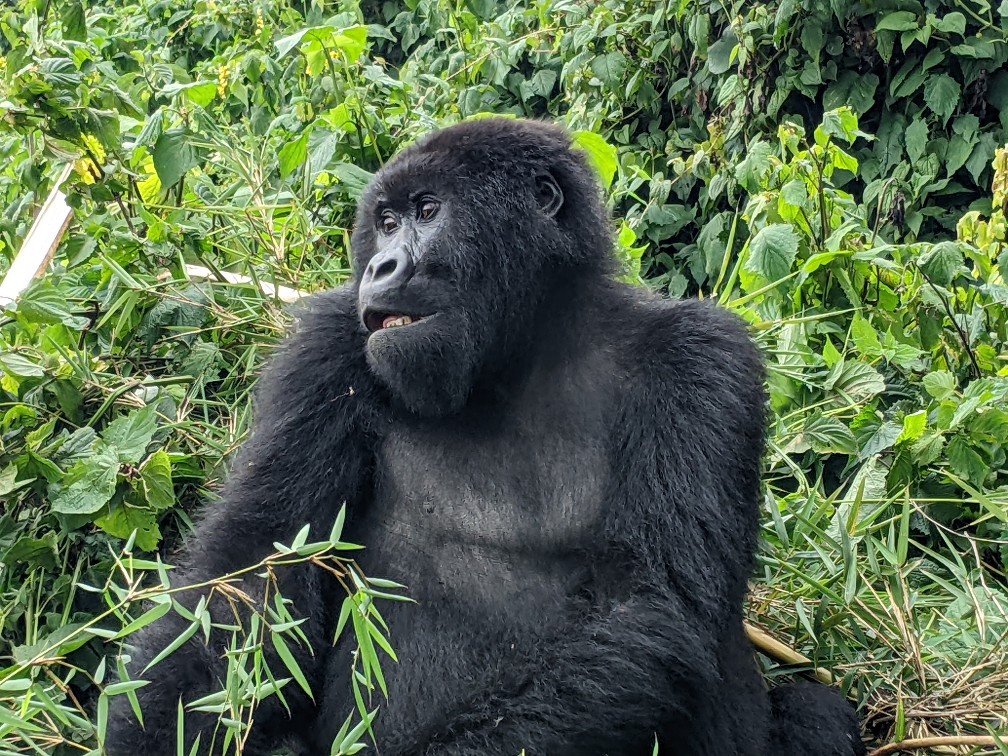
We walked back down the hill and our car was waiting for us. Next we went to a cultural village which was very commercialized and, frankly, kind of hokey. We didn’t learn much about the culture or the history because the woman who ushered us around the village was very difficult to hear and her English wasn’t great. She couldn’t fully understand our questions. Here are a couple of pictures of the “welcoming committee.”
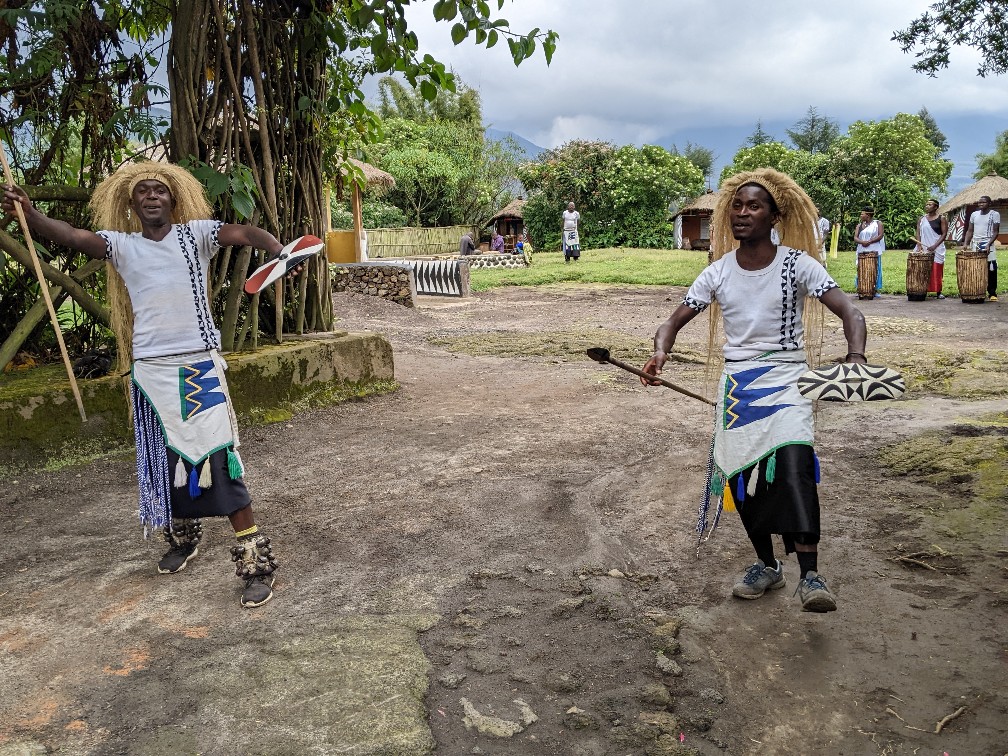
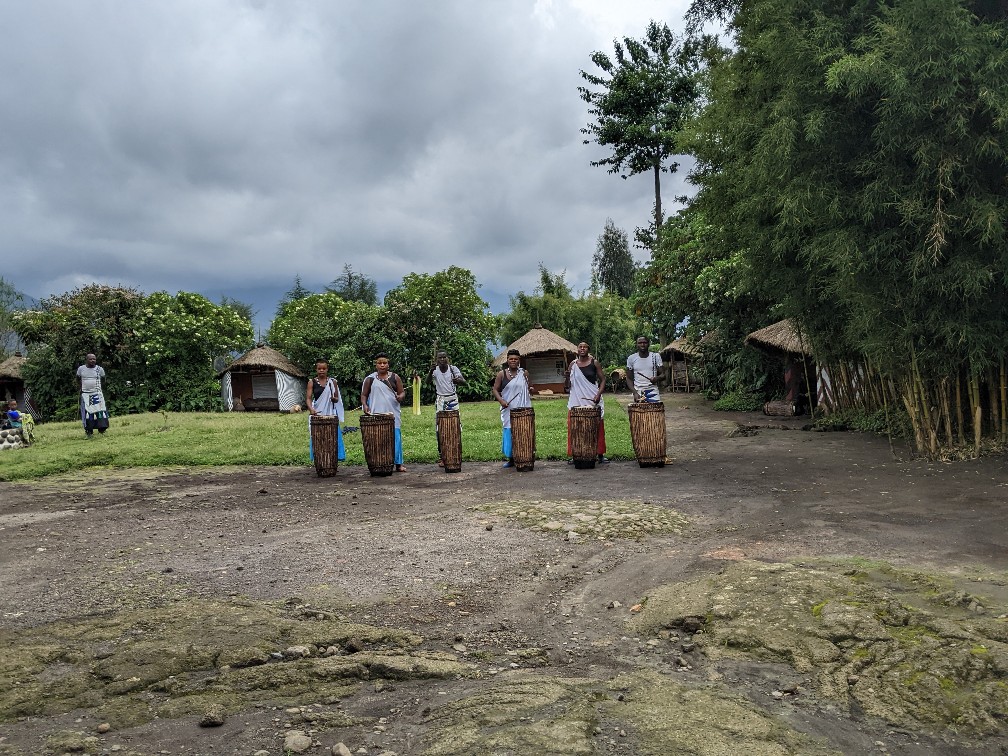
We came back to the hotel and had lunch. While we were in the restaurant, top generals from the Rwandan army came in. One of them talked to us and asked if we were nervous to have so many military men there. We said no, that is made us feel safe. Several people have talked to us about the importance of the military in terms of keeping Rwanda safe. Of course they have the warring DRC to their north, but it also seems to partially be the aftermath of the genocide. Having such a strong military seems danagerous to me because they could easily support a coup and install a dictator.
That afternoon we both napped, relaxed, and blogged. It poured rain. We didn’t realize it but this is considered low season since it rains on and off a lot. The walk up to see the gorillas will probably be a muddy mess tomorrow.
We had another great dinner at the hotel. We would strongly recommend our hotel, the Bishop’s House. Everyone is very friendly and helpful. At dinner we were talking to our waiter who was 29 years old. His father died a number of years ago and our waiter is supporting several siblings and his mother. So while life is better here in Rwanda than in Madagascar it’s not easy. We asked him if he was a Hutu or a Tutsi and he wouldn’t answer us. I think that is because they don’t want to view themselves as one or the other, rather they view themselves as Rwandan.
